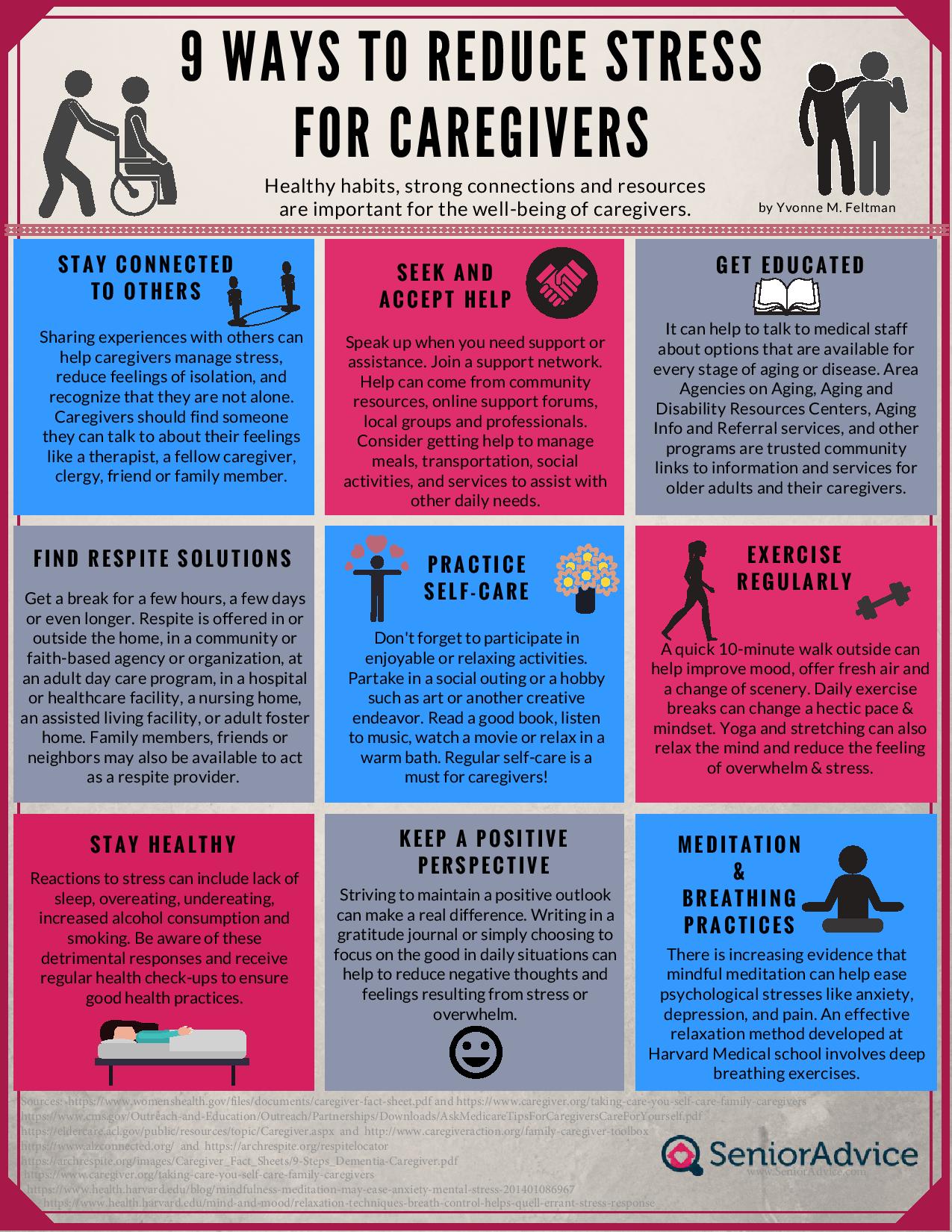
Great Self Care Tips From Senior Advice!



Imagine a child first learning how to walk.
Most adults shift their weight from side to side when they walk. If you were to exaggerate this movement, it would look like a waddle, but if you watch a child walk, they walk forward and straight.
Children don’t waddle when they walk.
One problem with the waddle is that you lose the momentum that each step generates. It’s as if you are applying a brake with each step. Instead, if you think of yourself walking forward and not side to side, you will discover that your legs and feet will dynamically flow underneath you. Walking dynamically with forward intention will make walking easier and more efficient.
Another problem with the waddle is that the foot doesn’t articulate with the ground in a dynamic way, thus having an undesirable effect on balance and stride. When your foot works well, it strikes the ground slightly to the outside and to the front of the heel. Your weight then crosses the large arch, the medial-longitudinal arch, over to the big toe.
Your big toe has two very important jobs. It helps you balance, and it propels you forward. Many adults do not engage the big toe at all. Instead, they hold the toe up and only walk on the soles of their feet. This inevitably results in the side-to-side waddle. People who do this to an extreme will create holes with their big toes on the tops of their sneakers and slippers.
If you were to exaggerate this movement, you would eventually shuffle.
The good news is that if you are shuffling now, with a little conscious thought, you can stop shuffling and move into a dynamic walk.
Shoes that fit well with a pliable and thin sole are essential for happy feet and dynamic walking. Here is a Keen sandal at Amazon. I absolutely love, love, love this shoe
Stay away from bulky, padded sneakers that, although comfortable, are not flexible.
Your toes need to be able to splay as you move. Your feet need to flex and adjust in order to keep you balanced.
Make sure that your shoes are large enough to accommodate this movement. Also, overly tight socks can impede movement and diminish balance.
If you are unsteady on your feet or you fear falling, hiking poles are a great way to ensure balance and gain confidence.
Whether you use one or two poles is up to you, but the added point of contact is a huge benefit. Used by hikers and climbers worldwide, the hiking pole is lightweight yet sturdy.
The pole height is adjustable, and it comes with a strap that goes around your wrist. To customize the height, hold your forearms at a right angle from your upper arm.
You can purchase hiking poles at many sporting-goods stores or at Amazon here.
Last week I talked about the benefits of turning your power walk into a stroll. You can see that article here.
Next week I will give more instruction on how to improve your balance while walking.
How You Move Matters! You can learn how to move better with my Amazon bestselling bookAgility at Any Age: Discover the Secret to Balance, Mobility, and Confidence. My book is illustrated with 40 videos that you access with your iPad or smartphone!
You can purchase it here.
 My name is Mary Derbyshire. I am a fitness and movement coach. My methodology is the Alexander Technique, a mindfulness practice that teaches you how to move better. When you move better you feel better and when you feel better your whole life improves! Let me know what you think or ask a question! I love to hear from my readers! Feel free to post in the comments section below and feel free to share this with your friends!
My name is Mary Derbyshire. I am a fitness and movement coach. My methodology is the Alexander Technique, a mindfulness practice that teaches you how to move better. When you move better you feel better and when you feel better your whole life improves! Let me know what you think or ask a question! I love to hear from my readers! Feel free to post in the comments section below and feel free to share this with your friends!
One of the best ways to savor summer is to take a stroll.

You may be wondering why I use the word stroll instead of walk.
Taking a stroll is much different than taking a walk. A walk implies purpose, a stroll implies less intent.
A stroll allows for wandering. Just the sound of the word “stroll” is easier on the ear.
Walking has a job to do. Strolling is like going on vacation.
The Merriam Webster dictionary lists stroll’s synonyms as to saunter, to amble, and to ramble.
Oh, I like the sound of those words!
To take a walk means something else. It has a goal.
One walks for fitness. One walks to lose weight. You take a walk to clear your head. Some people take walks to elevate their heart rate or to increase bone density. Others take their dogs out for a walk. And still, there are those who walk to “get their steps in!”
Instead of walking briskly to lose weight and improve your cardiovascular system, what if you intentionally slowed down to a stroll and noticed the birds singing in the trees or your neighbor’s blooming sunflowers?
On your next stroll, you may notice that you are breathing more deeply, that you feel calmer or that perhaps those negative anxiety-creating thoughts have calmed down. Your stroll has turned into an expression of mindfulness.
Are we losing sight of the value of slowing down so that we can relish our world…stopping to smell the roses?

According to the Positive Psychology Program, among other benefits, a mindful stroll can:
Doesn’t that sound great! Who doesn’t want REDUCED STRESS!!!
I say let’s change the emphasis and take a stroll. Let me know how it goes. What do you notice about yourself and the world around you?
My next article will teach you how to stroll and walk better.
Here is another article on savoring summer!
How You Move Matters! You can learn how to move better with my Amazon bestselling bookAgility at Any Age: Discover the Secret to Balance, Mobility, and Confidence. My book is illustrated with 40 videos that you access with your iPad or smartphone!
You can purchase it here.
My name is Mary Derbyshire. I am a fitness and movement coach. My methodology is the Alexander Technique,  a mindfulness practice that teaches you how to move better. When you move better you feel better and when you feel better your whole life improves! Let me know what you think or ask a question! I love to hear from my readers! Feel free to post in the comments section below and feel free to share this with your friends!
a mindfulness practice that teaches you how to move better. When you move better you feel better and when you feel better your whole life improves! Let me know what you think or ask a question! I love to hear from my readers! Feel free to post in the comments section below and feel free to share this with your friends!

If you are like me you absolutely love summer. The long hours of daylight, the balmy air, flip flops, iced coffee, fireflies- to name just some of my favorite things. There are many reasons why I want to savor summer.
But before you know it summer is gone and the calendar says September and I am replacing the shorts in my closet with long pants and sweaters.
So often summer escapes me. Not this year!
This year, by being more intentional and mindful, I plan to make summer linger.
By bringing mindfulness into my life I will slow down summertime and relish in every moment possible.
Mindfulness matters. Bringing mindfulness to how you move is a powerful way improve your life.
Move every day with ease and joy. You will be amazed how it will change your life in many wonderful ways!
How You Move Matters! You can learn how to move better with my Amazon bestselling bookAgility at Any Age: Discover the Secret to Balance, Mobility, and Confidence. My book is illustrated with 40 videos that you access with your iPad or smartphone! You can purchase it here.
 My name is Mary Derbyshire. I am a fitness and movement coach. My methodology is the Alexander Technique, a mindfulness practice that teaches you how to move better. When you move better you feel better and when you feel better your whole life improves! Let me know what you think or ask a question! I love to hear from my readers! Feel free to post in the comments section below and feel free to share this with your friends!
My name is Mary Derbyshire. I am a fitness and movement coach. My methodology is the Alexander Technique, a mindfulness practice that teaches you how to move better. When you move better you feel better and when you feel better your whole life improves! Let me know what you think or ask a question! I love to hear from my readers! Feel free to post in the comments section below and feel free to share this with your friends!

It is time to garden!
Spring has finally decided to show up. The daffodils are turning their sunny faces to the sun, the peepers are peeping and my horses are shedding!
It is time to get out there and get your hands in the dirt.
It is also the time when many of my students show up at the Alexander Technique lessons with very achy backs, shoulders, elbows…you name it they hurt everywhere.
I get it! Gardening is challenging. First stooping down to the ground for long periods of time wreaks havoc on the back. Digging and pulling up weeds is difficult work and can result in sore wrists, hands, and elbows. Raking is actually a very complex motion and the repetitive movement can be hurtful. Then there is the fact that everyone wants to get their gardening done and that they work at it with a lot of intent or rather tension!
In short, gardening is a workout.
But, I would bet that you don’t go after your garden like you do a workout.
If you were to run a marathon you would never dream of just waking up one day and running a marathon! No! You would train for the marathon.
Then why do you think that you can just go out and garden for 3-5 hours without preparing for the garden workout? You need to train for your gardening hours just like you would train for running a race.
How You Move Matters! You can learn how to move better with my Amazon bestselling bookAgility at Any Age: Discover the Secret to Balance, Mobility, and Confidence. My book is illustrated with 40 videos that you access with your iPad or smartphone! You can purchase it here.
 My name is Mary Derbyshire. I am a fitness and movement coach. My methodology is the Alexander Technique, a mindfulness practice that teaches you how to move better. When you move better you feel better and when you feel better your whole life improves! Let me know what you think or ask a question! I love to hear from my readers! Feel free to post in the comments section below and feel free to share this with your friends!
My name is Mary Derbyshire. I am a fitness and movement coach. My methodology is the Alexander Technique, a mindfulness practice that teaches you how to move better. When you move better you feel better and when you feel better your whole life improves! Let me know what you think or ask a question! I love to hear from my readers! Feel free to post in the comments section below and feel free to share this with your friends!
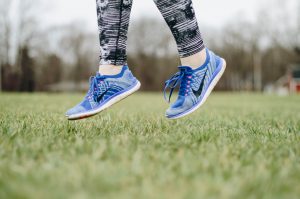
Has something ever happened in your life that has made you feel less than?
Have you hurt yourself in some way that has made you feel older and no longer young?
Perhaps you have fallen or strained your back, or you have had an illness like a bad cold or the flu or much worse?
Because I predominantly work with Baby Boomers and older I often see this in my practice.
A debilitating event occurs such as a strained back and a common thought is “this is it, I will never play golf again or I have to give up my garden and I will only grow flowers in pots. It’s all downhill from here. I am just going to decline and soon I’ll be dependent on a walker!!!”
I understand I have been there too, we all have.
But here is the thing. You had setbacks when you were young in your twenties, your thirties, your forties but guess what? You figured it out. You maneuvered around it. You got back in the saddle, back in the race, leaped over the hurdles.
You didn’t quit. You started again. Age has nothing to do with it! You don’t have to be young to rebound. Youth is not a prerequisite.
You can get past a setback.
Here is a testimonial from a former student. It tells a very important story about what is possible.
“I was at a point where I thought that I would never play golf again. I was 76 yrs old at the time.
After I had tried many therapeutic modalities one of the therapists recommended that I should go to Mary Derbyshire to learn the Alexander Technique.
We started the sessions in late June. We did two per week for about 8 weeks. I went away for a month and then we continued with 4 more sessions. By this time I was able to play golf again.
The technique has kept at bay all other muscle problems not just the back but in the legs, knees, and ankles.
As a result of what I have learned from Mary, I can make a swing with good turn in both directions and am hitting the ball better than I have in years. I expect to be able to do that for many years into the future.
Pip Danby, Golfer, 78
This is not an anomaly. Pip may have felt that his back was truly killing him, but it wasn’t. It was just a problem that needed to be solved. Pip learned how to move better and as a result, his aching back and legs went away and he could get on with his life and do the things that he loved to do. In his case it was golf.
I teach a fitness class that is influenced by the Alexander Technique. I have taught this class for 14 years. We may feel young, but we are not young. In my class, I have students in their 50’s, 60’s,70’s, 80’s and 90’s.
We all run, jump, skip, hop and stand on one leg. I once read an NYTimes article that said after 80 balancing on one leg was impossible. Well, we balance on one leg every single class and I have a lot of students over 80.
We defy the trend, we defy the pre-conceived ideas, maybe we even deny the logic but the main thing is that we keep moving.
We move and we move well. We keep turning our clock hands backward even after an event may move the hands forward.
1. Walk. Take a walk. Start with a short walk if this is new to you. Increase your walking time gradually. Wear flexible shoes that do not have a thick sole. You need to be able to feel the ground. Sit less, walk more.
2. Don’t spend your day sitting on a soft couch or soft chair. Instead, opt to spend some time sitting on a hard chair like a kitchen chair or dining room chair. And while sitting sit on your sitzbones. You can locate your sitz bones by sliding your hands palm side up under your bum. Feel those boney bits? Those are your sitz bones. In order to sit with any ease, you must be sitting on your sitz bones!
3. Stand on one leg. As we age our balance becomes compromised but you can change that. Challenging your sense of balance will improve it. These are simple activities but do not underestimate their effectiveness, they work! If you are unsteady do these next to a chair or counter. Stand on one foot with your other foot just slightly off of the ground. Switch. Then stand on one foot with the knee bent and the foot higher. Switch. Next, walk the plank by placing one foot directly in front of the other. Do this going several steps forward and backward. Next, draw a semi-circle in the air with your foot. Do the other side. It is easier performing these activities while looking at the floor. It is harder while looking straight ahead. It is most difficult if your eyes are closed. Challenge yourself!
4. Heel Raises: Try this- take off your shoes and lift your heels off the floor so that you are standing on the balls of your feet. Allow the toes to splay. Lower the heels and repeat several times. You may want to put a chair in front of you for support if needed. This simple movement will encourage foot flexibility.
5. Head shoulder turn. Head rotation is another movement that can become compromised as we age. While sitting in your new way by sitting on your sitz bones think of softening your jaw, tongue, and neck and gently turn your head to the right then let your shoulders follow. Turn your head back to the center and just allow your shoulders to follow your head. Repeat this to the left. Practice this easily several times.
6. Cultivate a breathing practice. Exhale the air in your lungs, and then wait and wait some more. Then allow your breath to come in through your nose and mouth but only when you feel the need. You are not trying to hold your breath; instead, you are waiting for an impulse for the breath to occur.
Exhale, close your mouth and wait. Wait some more, and wait a little longer. Now let the air come in through your nose. Wait and then exhale. Close your mouth and wait, wait some more, and wait a little longer. Now let the air come in through your nose. Wait and then exhale. Close your mouth and wait, wait some more, and wait a little longer. Now let the air come in through your nose. Return to breathing normally. This is our easy-breathing practice. I call it Exhale and Wait to Breathe.
7.Alexander Technique Lie Down Practice. Check out the video. Lying down in this way 15-20 minutes is great for everything. The AT Lie is a cornerstone of the Alexander Technique. Click here for the video.
Move every day with ease and joy. You will be amazed how it will change your life in many wonderful ways!
How You Move Matters! You can learn how to move better with my Amazon bestselling bookAgility at Any Age: Discover the Secret to Balance, Mobility, and Confidence. My book is illustrated with 40 videos that you access with your iPad or smartphone! You can purchase it here.
 My name is Mary Derbyshire. I am a fitness and movement coach. My methodology is the Alexander Technique, a mindfulness practice that teaches you how to move better. When you move better you feel better and when you feel better your whole life improves! Let me know what you think or ask a question! I love to hear from my readers! Feel free to post in the comments section below and feel free to share this with your friends!
My name is Mary Derbyshire. I am a fitness and movement coach. My methodology is the Alexander Technique, a mindfulness practice that teaches you how to move better. When you move better you feel better and when you feel better your whole life improves! Let me know what you think or ask a question! I love to hear from my readers! Feel free to post in the comments section below and feel free to share this with your friends!
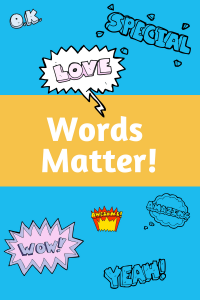 Do you use positive words to describe yourself?
Do you use positive words to describe yourself?
In other words, when you think about yourself do you use constructive non-judgmental sentences that edify you or do you use words that judge and discredit your abilities?
With most of my clients sadly it is the latter.
Let’s just think about the language that surrounds working out: no pain, no gain, feel the burn, double down, boot camp.
No wonder so many people hate to exercise or are intimidated by working out! There is not one positive word in that sentence!
Here’s the thing, language matters! Language matters a lot! We need to cultivate positive words!Just by changing the language you use to speak to yourself can change the quality of how you move and how you feel.
Just for fun try this short game or exercise I learned from my colleague Nancy Romita.
You can do this by yourself, but it works even better with a partner. One of you is partner A, and the other is partner B. Both of you are standing up. Partner A put your arms around partner B, and try to move or lift him or her. Notice that you are able to move partner B.
Next, partner A, recite this script to partner B:
“Imagine there is a giant hole at the top of your head, and into this hole is poured wet, gray cement. This wet, gray cement is filling up your skull, traveling down through your neck and into your lungs and chest. This wet, gray, heavy cement is filling up your abdomen and pelvis. Heavy, wet cement is pouring through your thighs, knees, and lower leg. This heavy, gray cement is moving into the ankles and feet. Heavy, gray cement is surrounding the foot.”
Partner A then tries to move or pick up partner B. Partner A cannot move partner B. Partner B is so heavy that he or she actually feels as if he or she were full of cement.
We don’t want to leave partner B in the quagmire of cement, so let’s lighten him or her up. Partner A, recite this script:
“You are standing in a pool of water, and the water is fresh and clean and sparkly. Allow the sparkly water to fill your feet and move through your ankles. This bright, sparkly water is swelling through your lower leg and up into your thighs. Allow this fresh water to fill up your abdomen and move into your lungs and chest. This bright, sparkly water is swelling up into your throat and your skull and is bubbling out through the crown of your head.” Now, partner A, try to lift partner B! Ta-da! It is so easy to move partner A.
There is scientific evidence that this is true. Neuroscientist and Alexander Technique teacher Rajal Cohen did a study using the phrase lighten up to see how it would affect posture, movement, and balance. Rajal runs the Mind in Movement Laboratory at the University of Idaho, where her work is “inspired by the idea that cognitive factors are important for controlling action.” In this study, her subjects were people with Parkinson’s disease. Parkinson’s is known for causing, among other things, rigid muscles, unsteady stance, and poor control of movement. Dr. Cohen found that when she asked these people to think about “lightening up,” (rather than “pulling up” or “relaxing”) their torsos became less rigid, their stance became steadier, and they were able to initiate movement more smoothly, indicating better control (Cohen 2015).
The cement game we just played demonstrates the importance of choosing language that benefits you. What old tapes are going through your head? What words do you use that just pull you down and compress you? Language is so important. Expressions liketry harder; double down; no pain, no gain; and pull yourself up by the bootstraps are not constructive or helpful. We need language that is kinder and gentler. We need positive words to encourage and build us up.
This game illustrates how simple it can be. So choose lighten up or allow, free up or let go. Your psycho-physical self will thank you!
Here is a link to a group of my students doing the Cement Game.
So choose positive words such as allow,, let go, lighten up, free up, easy dose it!How You Move Matters! You can learn how to move better with my Amazon bestselling bookAgility at Any Age: Discover the Secret to Balance, Mobility, and Confidence. My book is illustrated with 40 videos that you access with your iPad or smartphone! You can purchase it here.
My name is Mary Derbyshire. I am a fitness and movement coach. My methodology is the Alexander Technique,  a mindfulness practice that teaches you how to move better. When you move better you feel better and when you feel better your whole life improves! Let me know what you think or ask a question! I love to hear from my readers! Feel free to post in the comments section below and feel free to share this with your friends!
a mindfulness practice that teaches you how to move better. When you move better you feel better and when you feel better your whole life improves! Let me know what you think or ask a question! I love to hear from my readers! Feel free to post in the comments section below and feel free to share this with your friends!
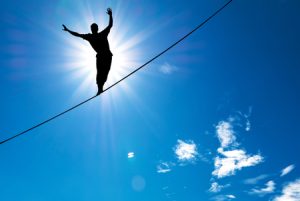
Maintaining a healthy and active sense of balance is imperative for living a dynamic life.
It is no news that fear of falling is one of the greatest fears for aging adults.
Have you ever tripped? It can be terrifying. Just think about the fear that rushes through your body when you start to fall!
Fear of falling is one of the strongest reflexes because your body will do everything in its power to prevent your noggin’ from hitting the floor!
The CDC reports that in the US alone we spend over 34 billion dollars in medical costs associated with falling. That says nothing about deaths, emotional trauma and the inability to get around and all of the lifestyle changes that ensue after a fall.
The CDC also says that 1 in 3 seniors over 65 will fall at some point in the course of a year. Clearly falling and balance are critical issues in our aging population.
Did you know that balance starts to decrease as early as our 20’s and declines with each passing year?
Depressing, I know, but here is some important knowledge- to improve balance you must challenge balance.
Our culture has become way too sedentary. We sit too much! We sit in our cars, we sit in front of the computer, we sit and watch TV. All of this sitting does not challenge balance and weakens or dulls the balance system.
Without getting too technical I want to briefly explore the three parts that comprise the balance system- the inner ear otherwise known as your vestibular system, eyesight, and proprioception. I call this the Balance Troika.
The Balance Troika.
How You Move Matters! You can learn how to move better with my Amazon bestselling book Agility at Any Age: Discover the Secret to Balance, Mobility, and Confidence. My book is illustrated with 40 videos that you access with your iPad or smartphone! You can purchase it here.

My name is Mary Derbyshire. I am a fitness and movement coach. My methodology is the Alexander Technique, a mindfulness-based practice that teaches you how to move better. When you move better you feel better and when you feel better your whole life improves! Let me know what you think or ask a question! I love to hear from my readers! Feel free to post in the comments section below and feel free to share this with your friends!
·
·
·
Copyright: <a href=’https://www.123rf.com/profile_bolina’>bolina / 123RF Stock Photo</a>
I want to introduce you to a concept you may not have heard of- Mindful Movement!
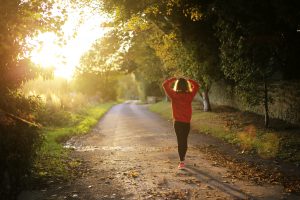
Yes, you read that correctly! Mindful movement.
I’m sure that you have heard about mindfulness and how it can reduce anxiety, lower blood pressure, lessen stress and overall make your life a whole lot more fun!
But did you know that you also can learn how to bring mindfulness to the way that you move?
When you create a mindful movement practice you get all of the benefits of mindfulness plus the advantages of reducing pain and stiffness, improved balance, mobility, and much more!
Here’s the thing. Most of us don’t think about how we move. (In fact, I believe, that most of us only think about our physicality in negative terms such as am I too tall, too short, too fat, too thin etc. But, that is another blog post.)
Learning how to move in a constructive way and paying attention to how you move is a powerful way to bring mindfulness into your life.
This is why I wrote my Amazon bestselling book Agility at Any Age: Discover the Secret to Balance, Mobility, and Confidence.
The book is unique in that it comes with 40 instructional videos that you can access with your smartphone, iPad, or computer.
Even though the universe is abuzz with the mind/body connection it needs to be taken one step further.
Instead of thinking about the mind/body connection, think about mind/ body unity!
You are a unified whole. There is just you, with no distinction between the mind and the body. This is what F.M. Alexander- the creator of the Alexander Technique–called the psycho-physical.
Let me give you an example.
I want you to think of something that terrifies you!
For me, it is public speaking.
Right now as I am writing this article and thinking about getting in front of an audience to speak I am starting to feel anxious. My palms are starting to sweat, I feel a little uncomfortable, my stomach is beginning to clench, my mouth is dry and I feel a little panicky!
Just the thought of getting up in front of an audience puts my body in fight or flight mode. My thoughts about speaking in public are affecting me physically.
The reverse is true as well. You may be anxious and stressed about a situation but may be relieved just by taking a walk or going for a run. The physical act of walking or running calms you down.
As Caesar Milan, The Dog Whisperer once said: “The mental affects the physical and the physical affects the mental.”
So here is an example. The next time that you go to the gym or go for a walk or work out think this one thought. I’m not going to try so hard when I move. Instead, I’m going to think “how can I do this activity with less effort.” Apply this thinking to your workout and let me know how it goes!
Your thinking can change your physicality; this is the power of the psycho-physical.
So let’s start paying attention to how we move! Let’s start a movement revolution where the how you exercise is at least as important as the activity of exercising!
How You Move Matters! You can learn how to move better with my Amazon bestselling book Agility at Any Age: Discover the Secret to Balance, Mobility, and Confidence. My book is illustrated with 40 videos that you access with your iPad or smartphone! You can purchase it here.

My name is Mary Derbyshire. I am a fitness and movement coach. My methodology is the Alexander Technique, a mindfulness-based practice that teaches you how to move better. When you move better you feel better and when you feel better your whole life improves! Let me know what you think or ask a question! I love to hear from my readers! Feel free to post in the comments section below and feel free to share this with your friends!
Jaw pain can be just annoying or incredibly debilitating.

Perhaps this is you. You wake up in the morning and your jaw just aches. Sometimes just touching your jaw can be sore and uncomfortable
Or perhaps you go to the dentist and you are told that you grind your teeth and that you should use a mouth guard. You know that you probably grind your teeth because you sometimes get sharp pain in your jaw during the day.
I’ve even had clients whose jaw pain is so acute that they have sinus problems and headaches. When we address the jaw pain both of these other problems have disappeared.
In this article, I want to teach you 3 simple ways that could help you relieve jaw pain.
And when I say simple I mean simple. I want to take a moment here and talk about simplicity. I feel that we live in a complicated world and we think that in order for solutions to be effective they need to be complicated. We may think that we need a complicated drug or another complicated solution. We are wary of simplicity. I have taught movement, fitness and a mindfulness practice called the Alexander Technique for over 20 years and my experience is that when applied simple solutions can be very effective! Are you with me?
How You Move Matters! You can learn how to move better with my Amazon bestselling book Agility at Any Age: Discover the Secret to Balance, Mobility, and Confidence. My book is illustrated with 40 videos that you access with your iPad or smartphone! You can purchase it here.
 My name is Mary Derbyshire. I am a fitness and movement coach. My methodology is the Alexander Technique, a mindfulness-based practice that teaches you how to move better. When you move better you feel better and when you feel better your whole life improves! Let me know what you think or ask a question! I love to hear from my readers! Feel free to post in the comments section below.
My name is Mary Derbyshire. I am a fitness and movement coach. My methodology is the Alexander Technique, a mindfulness-based practice that teaches you how to move better. When you move better you feel better and when you feel better your whole life improves! Let me know what you think or ask a question! I love to hear from my readers! Feel free to post in the comments section below.